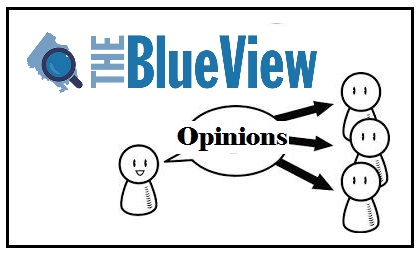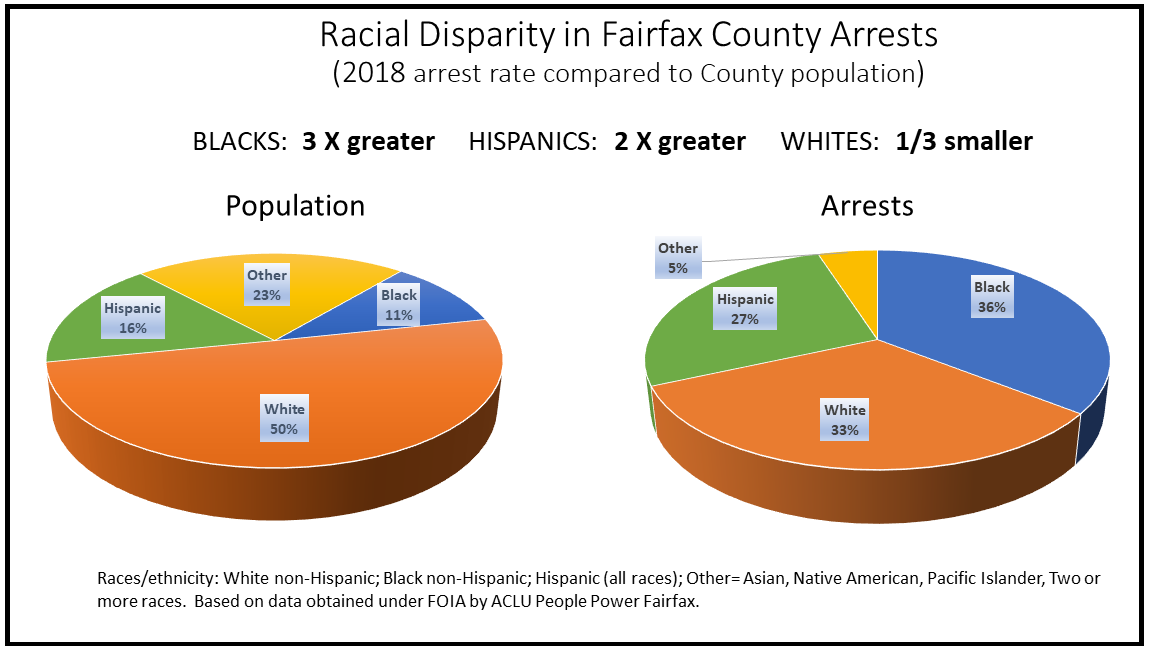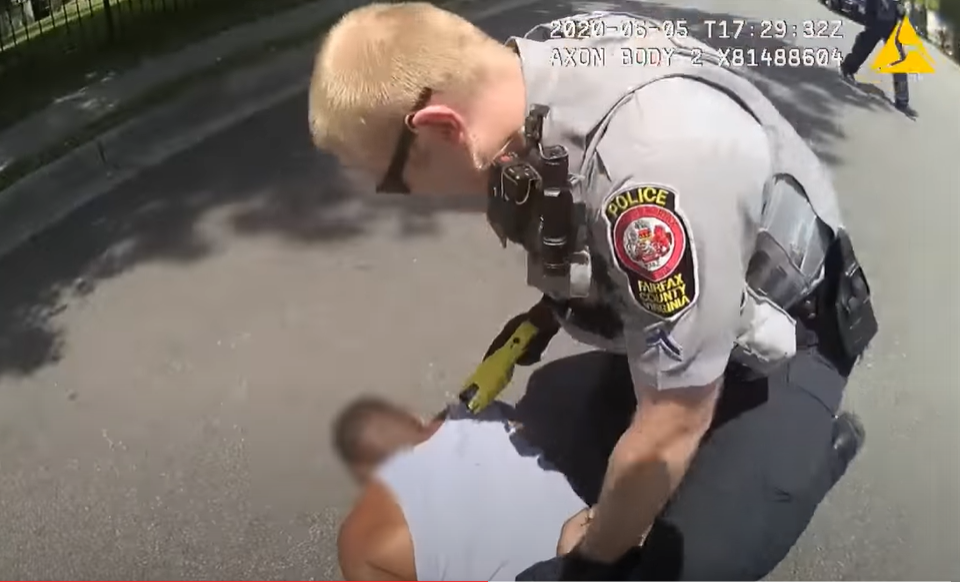By Diane Burkley Alejandro:
We all were horrified as we watched the video showing a Minneapolis policeman extinguishing George Floyd’s life with his knee. Fairfax County is not Minneapolis. But on Friday June 5, we were reminded that police violence occurs here, too.
Body-cam footage initially showed police and other first responders calmly talking to a man who appeared to be disoriented. Then Fairfax County Police Officer Tyler Timberlake arrived on scene and within seconds deployed his taser, continuing his assault even after the man was face down on the ground.

Here is the good news: Leaders lived up to their obligation to reject and punish police brutality. ACLU People Power Fairfax commends them all.
Fairfax County Commonwealth’s Attorney Steve Descano and Police Chief Ed Roessler swiftly charged Timberlake with assault and battery and initiated administrative action against him. Board of Supervisors Chair Jeff McKay strongly condemned the action and introduced a motion that passed unanimously on June 9 to expand the use of body worn cameras throughout the county.
The motion required the supervisory board to recognize that they erred last month when they put the expansion of the body worn cameras program on hold as a cost saving measure—a rare admission in the world of politics. Finally, McKay announced the formation of a Taskforce on Equity and Opportunity charged with recommending countywide changes to help solve the root causes of disparity.
Here is the bad news: We are nowhere close to achieving a color-blind criminal justice system. And the county’s failure to address concerns about racial disparity impedes our ability to do so.
This is hard for officials to admit (and some have not), because the county has spent a lot of time and effort addressing police reform. After an unjustified shooting of a man in 2013, the county set up a large task force that came up with hundreds of recommendations, mostly adopted in whole or in part. The county established a Civilian Review Panel (CRP) and an Independent Police Auditor (IPA), as well as new use of force guidelines.
County leaders insist our police force is now exemplary and that wrongdoing is simply the result of a few “bad apples.” I respect these leaders, and trust that they believe this. My question for them is: how do you know?
Fairfax people of color say they are targeted by police due to racial profiling. Implicit and explicit bias prompts society at large to treat people of color differently from whites. Why would police be exempt? We don’t have to go to the extreme of saying “all police are bad” (they are not) to admit that there are systemic problems that need fixing.
Below is a brief snapshot of Fairfax’s disparity, and purported transparency and accountability. It is by no means an exhaustive list of the problems, which span hiring, training and operations as well.

- Racial disparity is endemic in Fairfax’s criminal justice system.
Police use of force disproportionately affects people of color. African Americans represent less than 10% of the county’s population, but they were targeted in almost 50% of the use of force incidents.
Disparity is not limited to excessive force; nor is it limited to black people. African Americans are arrested at a rate three times higher than their population percentage, Latinx at a rate two times higher.
- Fairfax doesn’t disclose essential demographics.
The police department does not publish race and ethnicity data on its website—not for total arrests, specific crimes, stops, traffic citations or custodial arrests for misdemeanors. They do so only for use of force and their workforce diversity, where little improvement is evident.
We know the broader data is collected because we have obtained it under FOIA. Hiding the data leads to the suspicion that leadership doesn’t want to address questions about why the disparity exists.
- Independent studies keep being put on hold.
An independent study is not a cure all. But researchers know how to use statistical tools to control for various factors such as when arrests are prompted by calls to the police versus initiated by officers, giving us objective information we sorely need.
In January 2020, the IPA contracted for an independent study of use of force to be completed by early 2021. This is a positive development, but it is years late and too narrow in scope. We were promised a study of racial disparity in all police actions in 2017. Why was that much needed study abandoned and when will it be provided?
- Accountability measures fall short.
County officials often point to the CRP, which reviews complaints about police misconduct, and the IPA, who reviews use of force complaints, as evidence of the accountability measures in place. Unfortunately, their mandates are far too limited to provide independent oversight. Neither has authority to independently investigate allegations; they simply review the police internal affairs findings and have no authority to override them.
- The Chair’s taskforce is no substitute for immediate targeted police reform.
We applaud the Chair McKay for setting up the equity taskforce. It should provide invaluable information about the causes of inequity and hopefully lead to meaningful change. But the county itself has made clear that the taskforce is not intended as a substitute for immediate actions needed now.
Lee District Supervisor and Public Safety Committee Chair Rodney Lusk agrees, and is holding a committee meeting on Tuesday June 16 to address policing of people of color. I recommend that you watch what officials have to say.
After the public safety hearing, the Board of Supervisors must immediately start the process of rectifying the systemic inequities in Fairfax policing. Some issues, such as mutual fear and mistrust between the community and police, training needs, and the insular police culture will take further thought and community involvement, including through Chair McKay’s new Taskforce.
The County can, however, quickly adopt transparency and accountability measures which have been discussed for years—including regular publication of race and ethnicity data, contracting for an independent study of disparity in police actions, and giving the CRP and IPA real investigative and oversight authority. We cannot rely only on bystander videos or body worn cameras to police the police.
Photo: Police Officer Tyler Timberlake has been charged with assault and battery after tasing an apparently disoriented man. Photo from Fairfax County Police Department YouTube channel

Diane Burkley Alejandro is a public interest attorney with over 20 years’ experience as a senior federal political appointee and law firm partner. She is the lead advocate for ACLU People Power Fairfax, an independent grassroots organization that advocates for equal justice for all members of the community, including undocumented immigrants, regardless of race or ethnicity. People Power is an ACLU-initiated advocacy platform whose local efforts reflect the views of its members, not those of the ACLU Virginia affiliate.
Like this story? Share it on social media!

